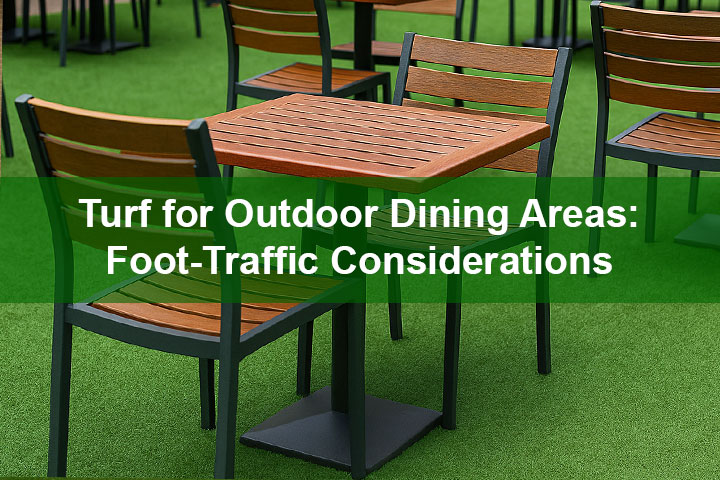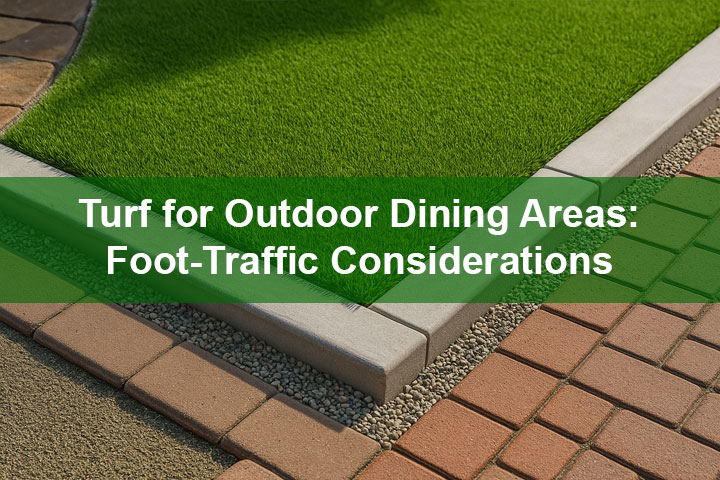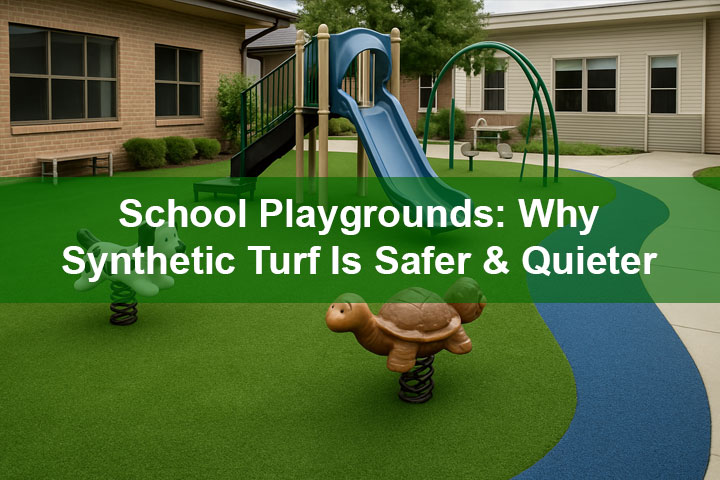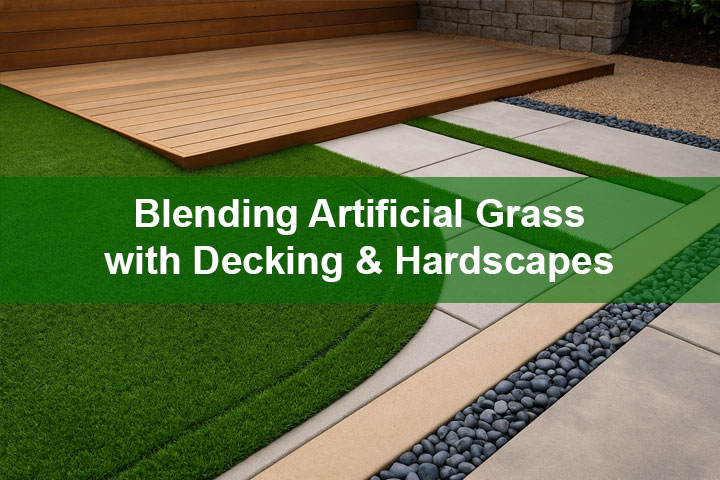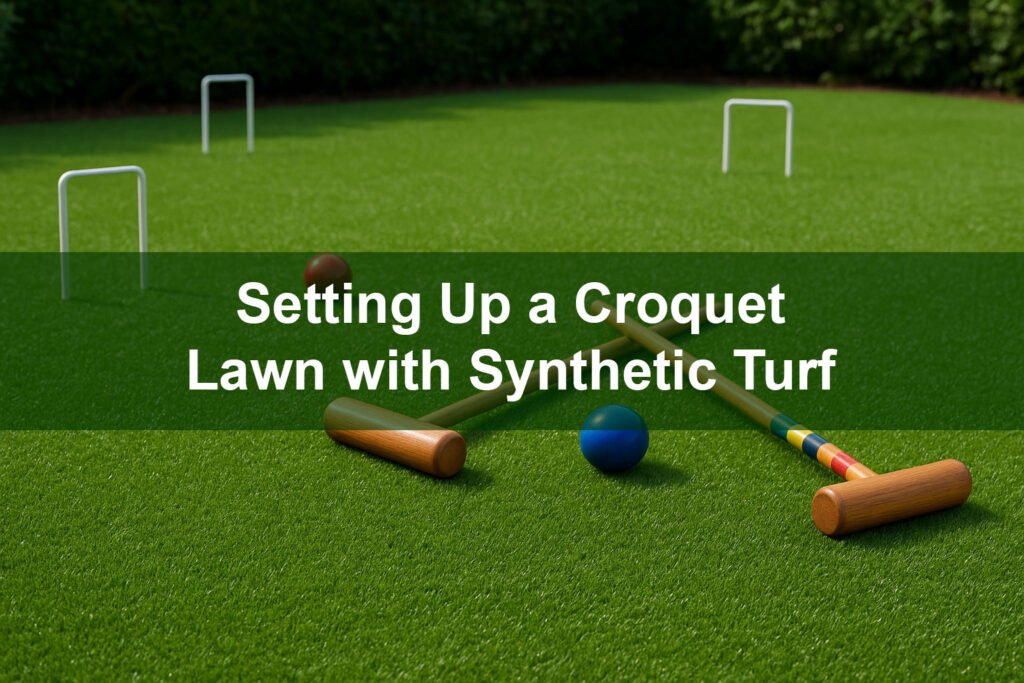Planning to install an artificial grass football field in 2025? Understanding the artificial grass football field cost is essential for making informed financial decisions.
With the rising demand for artificial turf due to its durability and low maintenance, knowing the breakdown of upfront expenses, long-term costs, and potential pitfalls will help you avoid budget surprises and maximize your investment.
What We’ll Cover:
- Installation Costs: What Goes Into the Initial Price Tag?
- Factors That Affect Artificial Grass Football Field Costs
- Maintenance and Long-Term Expenses to Consider
- The Importance of Proper Drainage and Sub-Base Construction
- Choosing the Right Materials for Durability and Cost-Efficiency
- Common Pitfalls and Cost Overruns to Avoid
- Long-Term Value: Is It Worth the Investment?
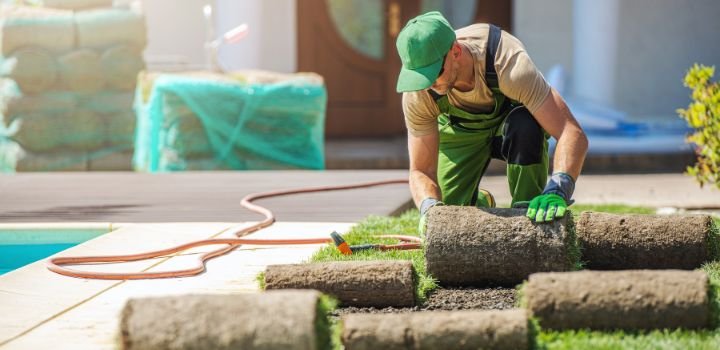
Installation Costs: What Goes Into the Initial Price Tag?
The initial installation cost of an artificial grass football field varies widely depending on several components.
The average cost can range between $500,000 and $1 million for a full-sized field.
Here’s what contributes to that figure:
- Site Preparation: Clearing and leveling the field, soil removal, and grading.
- Sub-Base Installation: Adding a stable layer to ensure proper drainage and prevent shifting.
- Drainage Systems: Essential to avoid water pooling and field damage.
- Artificial Turf: The cost depends on the type of grass, pile height, and quality.
- Labor and Equipment: Professional installation fees, including machinery.
Cost Breakdown:
- Site preparation: $50,000 – $100,000
- Sub-base installation: $100,000 – $200,000
- Turf material: $200,000 – $400,000
- Drainage system: $50,000 – $150,000
- Labor and equipment: $100,000 – $200,000
Key Elements:
1. Site Preparation:
- This step involves clearing and leveling the land, removing any obstacles like rocks or existing vegetation, and grading the surface to ensure a smooth and stable base.
- Site preparation costs can vary depending on the condition of the land. If significant excavation or debris removal is needed, the cost will increase.
Learn more about our expert lawn installation services, including grading, debris removal, and site preparation, by visiting our lawn services page.
2. Sub-Base Installation:
- A stable sub-base is critical to prevent the artificial grass from shifting or developing uneven spots over time.
- This includes laying materials like gravel or crushed stone and compacting them to form a solid foundation.
- A properly installed sub-base also ensures effective drainage, preventing waterlogging and damage.
3. Drainage Systems:
- Drainage is essential to avoid water pooling, which can damage the turf and affect playability.
- This involves installing drainage pipes and systems that channel excess water away from the field.
- Without proper drainage, fields may face frequent flooding or surface deterioration, leading to costly repairs.
Explore our advanced drainage solutions tailored for high-performance sports fields to ensure optimal playability and durability. Visit our sports turf page.
4. Artificial Turf:
- The type, quality, and characteristics of the turf significantly impact overall cost.
- Premium artificial grass, which offers higher durability and longer lifespans, typically comes at a higher price.
- Factors like pile height (the length of the grass blades) and infill materials (used for cushioning and drainage) are key considerations when selecting the turf.
Discover our wide range of premium artificial grass options designed to transform your outdoor living spaces into lush, low-maintenance environments. Visit our outdoor living solutions page.
5. Labor and Equipment:
- Installing an artificial grass football field requires skilled labor and specialized equipment.
- Professional installers ensure the field is correctly constructed, meeting safety and performance standards.
- Labor costs can vary depending on the project’s complexity and location.
Looking for professional artificial grass installation? Our experienced installers ensure a seamless and efficient process. Learn more by visiting our installation services page.
By understanding each of these components, you can better estimate the total cost of your project and plan your budget effectively.

Factors That Affect Artificial Grass Football Field Costs
Several factors can influence your total costs, including:
1. Field Size
The larger the field, the more materials and labor will be required, which significantly increases overall costs.
For example, a standard full-sized football field (100 yards) will require more artificial turf, sub-base preparation, and infill compared to smaller recreational or training fields.
- Example Impact: A full-sized field could see costs up to $1 million, while a half-sized or smaller field may cost around $300,000 – $500,000, depending on customization.
2. Type of Artificial Grass
The type and quality of the artificial grass chosen directly affect both initial and long-term costs.
Higher-end products like monofilament fibers offer greater durability and require less frequent replacement but come at a higher upfront cost.
- High-Quality Turf: Offers 10- to 15-year durability, with better resistance to wear.
- Lower-Grade Turf: May be cheaper initially but typically has a lifespan of only 5 to 8 years, leading to replacement costs sooner.
To learn more about FIFA’s rigorous testing and certification standards for artificial football turf, visit FIFA Quality Programme for Football Turf.
3. Location and Accessibility
The location of the project site can affect transportation and labor costs.
Fields in urban or remote areas may face logistical challenges, such as limited access for equipment or higher transportation fees.
- Urban Areas: Equipment staging and labor may be more expensive due to limited space and stricter regulations.
- Remote Areas: Higher transportation costs and additional labor charges for accessing difficult terrain may increase the budget.
4. Customization Options
Adding custom features like field markings, logos, or underlayment for extra shock absorption can raise overall expenses.
Customization is often necessary for competitive sports fields to meet league regulations.
- Lines and Markings: Permanent markings add convenience but cost more than temporary paint applications.
- Logos and Branding: Custom field logos can enhance aesthetics but typically cost thousands of dollars to install.
Understanding these variables will help you plan accurately and avoid unexpected expenses, ensuring that your project stays within budget while meeting your performance and durability requirements.
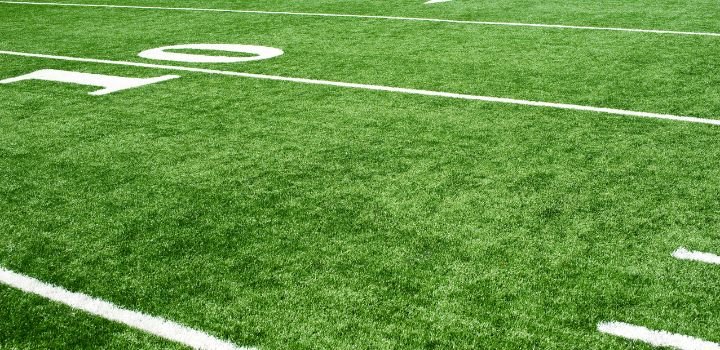
Maintenance and Long-Term Expenses to Consider
One of the reasons artificial grass is popular is its lower maintenance compared to natural turf.
However, it’s not maintenance-free, and you should budget for ongoing care.
Typical annual maintenance costs range between $5,000 and $15,000.
Key maintenance tasks include:
- Brushing and Grooming: To keep the blades upright and prevent matting.
- Cleaning and Sanitizing: Regular cleaning to remove dirt, debris, and bacteria.
- Infill Replacement: Periodically adding infill to maintain proper cushioning and drainage.
- Minor Repairs: Fixing any tears or damage.
This guide highlights effective cleaning solutions to keep your turf fresh, safe, and long-lasting.
Interested in maintaining your artificial grass yourself? Access our expert tips and step-by-step guides by visiting our DIY maintenance page.
The Importance of Maintenance
- Extending Lifespan: Regular maintenance ensures you get the most out of your investment by preventing premature wear and tear.
- Enhancing Safety: Well-maintained fields offer consistent surfaces that reduce player injuries caused by uneven or slippery patches.
- Maintaining Playability: Keeps the field in optimal condition, providing consistent ball movement and traction.
- Preventing Costly Repairs: Addressing minor issues promptly avoids expensive, large-scale repairs.
For a comprehensive guide on keeping your artificial turf clean and well-maintained, visit The Ultimate Guide to Cleaning Artificial Grass.

The Importance of Proper Drainage and Sub-Base Construction
Proper drainage and sub-base construction are critical components when installing an artificial grass football field.
Without a well-designed drainage system, the entire field can face serious structural and usability issues over time.
Poor drainage can lead to water pooling, uneven surfaces, and damage that can cost thousands of dollars to fix.
Investing in a well-constructed sub-base and drainage system is non-negotiable to ensure the long-term performance of the field.
Learn how our customized drainage solutions can enhance the performance of your outdoor installations by visiting our full-service installation page.
Why Is Proper Drainage Important?
- Prevents Water Pooling and Structural Damage: A poorly drained field can experience water pooling, leading to soil erosion, weakened sub-bases, and damage to the artificial turf. This can create uneven surfaces, posing a safety hazard to players and necessitating costly repairs.
- Improves Player Safety and Game Performance: When water is allowed to pool, it can create slippery conditions and uneven patches, increasing the risk of player injuries. Proper drainage ensures a dry and even surface, promoting optimal traction and ball control.
- Enhances Durability and Field Lifespan: Constant water exposure can degrade the artificial turf, especially in regions with heavy rainfall. A good drainage system prevents standing water from weakening the turf, extending its life and reducing long-term maintenance costs.
- Minimizes Downtime After Rainfall: Fields without proper drainage often require longer recovery times after rain, limiting availability for games or practice. With adequate drainage, excess water is quickly channeled away, allowing for continuous play even after heavy rain.
For more information on common drainage problems and effective fixes when dealing with artificial grass installations, visit Artificial Grass Drainage Problems and Fixes.
Discover our pet-friendly artificial grass solutions, designed to be durable, easy to clean, and safe for pets. Visit our pet-friendly turf solutions page.

Choosing the Right Materials for Durability and Cost-Efficiency
Not all artificial turf is created equal. Selecting the right materials can impact both the cost and long-term performance of your field.
Types of Artificial Turf:
- Monofilament fibers: Known for their durability and ability to withstand heavy foot traffic, monofilament fibers are a popular choice for professional and high-use sports fields. The individual fibers are designed to be resilient and maintain their upright structure, providing a more realistic grass feel. Although they tend to be more expensive, their longevity and minimal maintenance make them cost-effective in the long run.
- Fibrillated fibers: These fibers start as a wide strip that splits into smaller fibers over time, creating a dense, interlocking surface. Fibrillated fibers are more affordable than monofilament options but may wear down more quickly under heavy usage. They are often used for recreational fields or areas with moderate play intensity.
- Hybrid systems: Combining synthetic turf with natural grass, hybrid systems offer a balance between the resilience of artificial fibers and the natural feel of real grass. This type is often used in elite sports facilities where optimal performance and player comfort are paramount. While hybrid systems can be expensive upfront, they provide excellent playability and enhanced surface recovery.
By selecting the right materials, you can ensure your field stays durable, cost-effective, and suited to the level of activity it will experience.

Common Pitfalls and Cost Overruns to Avoid
Here are some common issues that lead to unexpected expenses and a example to illustrate their impact:
- Underestimating Installation Costs: Overlooking costs like site preparation and sub-base construction can lead to significant delays and budget overruns. For instance, a school district that budgeted only for the turf installation later faced a $200,000 shortfall when additional excavation and sub-base reinforcement were required due to poor soil conditions.
- Ignoring Maintenance Requirements: Failing to budget for ongoing care can lead to costly repairs. An example is a community sports facility that skipped annual infill replacement and brushing. Within five years, the turf surface became compacted and unsafe, requiring a $50,000 restoration project.
- Cutting Corners on Drainage: Skipping or minimizing drainage can result in water damage. One sports club installed a basic drainage system to cut costs, only to face severe water pooling after heavy rains. The resulting turf damage led to $100,000 in drainage upgrades and field repairs.
- Choosing Low-Quality Materials: Initially cheaper materials often require frequent replacement. For example, a small recreational park opted for low-cost turf that began showing wear and tear within two years, forcing them to replace sections of the field at double the initial cost over a 10-year period.
These examples highlight the importance of proper planning and investment to avoid unexpected expenses and ensure long-term value.

Long-Term Value: Is It Worth the Investment?
Artificial grass football fields offer a range of benefits that extend beyond the initial installation.
By reducing maintenance and providing consistent, year-round performance, these fields deliver long-term cost savings and reliable durability.
Studies have shown that over a 10- to 15-year lifespan, the reduction in maintenance and repair costs can save facilities tens of thousands of dollars compared to natural turf.
To understand the factors that impact the lifespan of artificial grass and how to maximize its durability, visit How Long Does Artificial Grass Last?.
Key Long-Term Benefits:
- Lower Operating Costs: Artificial grass significantly reduces the need for water, fertilizer, and regular upkeep, cutting down operational expenses by 20% to 30% annually.
- Extended Lifespan: With proper maintenance, artificial turf can last between 10 and 15 years, making it a worthwhile long-term investment.
- All-Season Usage: Unlike natural grass, which can become muddy or worn down during rain or heavy use, artificial grass is designed for year-round play, enhancing availability and scheduling flexibility.
By carefully considering the artificial grass football field cost and planning for long-term benefits, you can maximize the return on investment and ensure the field remains a valuable asset for years to come.
For insights on water conservation and strategies to use water efficiently, visit EPA’s WaterSense Program.
Conclusion: Maximize Your Investment with Proper Planning
Understanding the artificial grass football field cost is key to ensuring a successful and cost-effective installation.
By planning carefully and considering the key factors, you can make the most of your investment, ensuring long-term value and reliable performance for years to come.
If you’re considering installing an artificial grass football field or need help with any landscaping solutions, Buy-Grass is here to help.
Contact us today to discuss your project and get expert advice on artificial grass products and installation solutions tailored to your needs.
Let us help you make the most of your investment and ensure your artificial grass football field cost aligns with your long-term goals.


